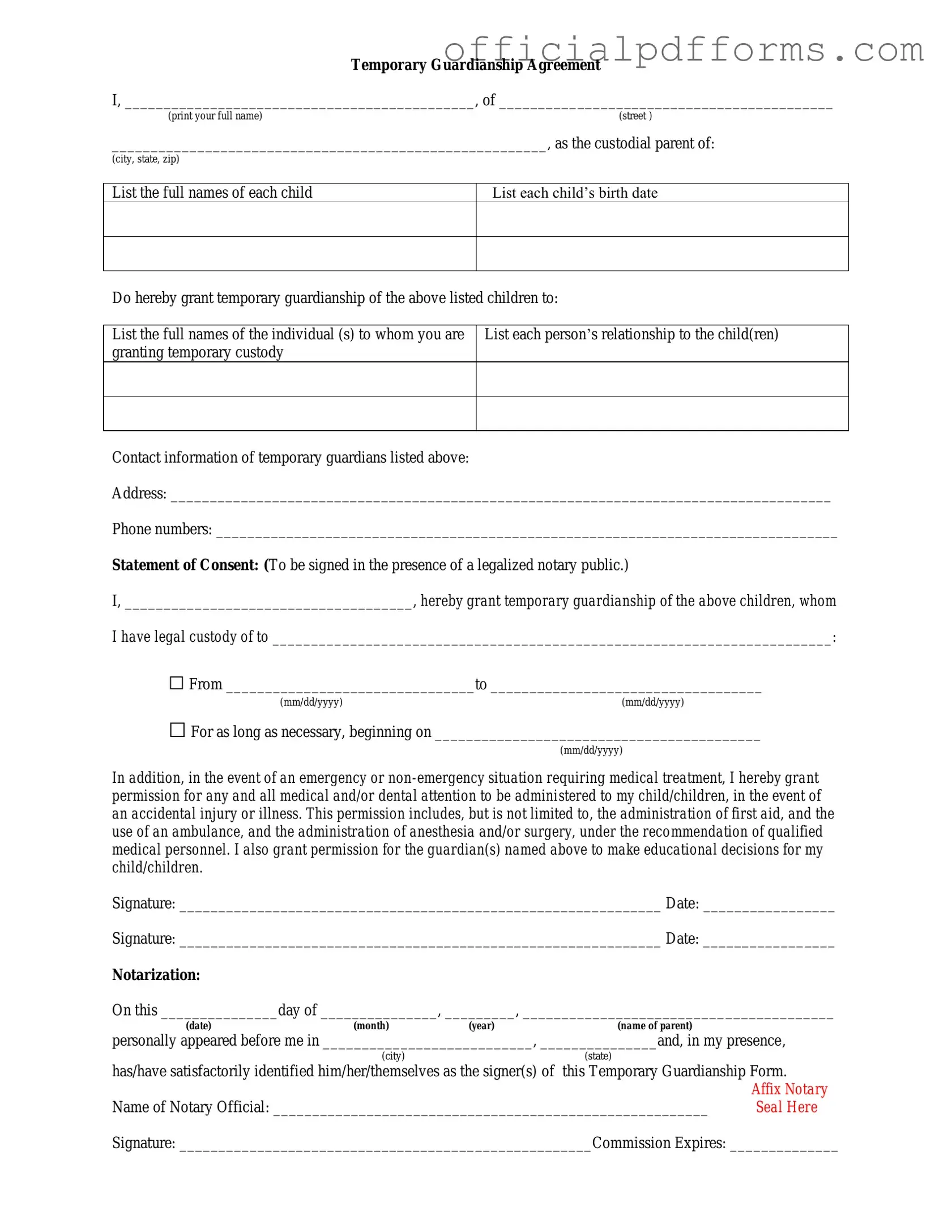A Temporary Custody form is a legal document used to establish temporary guardianship of a child. This form is often utilized when a parent or legal guardian is unable to care for their child for a specific period. The form outlines the responsibilities and rights of the temporary custodian, ensuring that the child's needs are met during this time.
Who can file for Temporary Custody?
Generally, any adult who has a legitimate interest in the child's welfare can file for Temporary Custody. This may include relatives, family friends, or even non-relatives who have been involved in the child's life. However, the court will ultimately decide based on the best interests of the child.
To complete the Temporary Custody form, you will need to provide the following information:
-
The names and addresses of the child and the proposed temporary custodian.
-
The reasons for seeking temporary custody.
-
Details about the child's current living situation.
-
Information regarding the child's parents or legal guardians, including their consent or objections.
How long does Temporary Custody last?
The duration of Temporary Custody can vary depending on the circumstances. Typically, it lasts until a court hearing can be held to determine the child's permanent custody arrangement. This period may range from a few weeks to several months, depending on the specific case.
Is a court hearing required for Temporary Custody?
Yes, a court hearing is usually required to finalize the Temporary Custody arrangement. During this hearing, the judge will review the evidence and consider the best interests of the child before making a decision. It is important to attend this hearing, as it provides an opportunity to present your case.
What happens if the parents do not agree to Temporary Custody?
If the parents do not agree to Temporary Custody, the court will assess the situation. The judge will consider the reasons for the disagreement and evaluate the child's best interests. In some cases, a temporary custody arrangement may still be granted if it is deemed necessary for the child's welfare.
Can Temporary Custody be modified?
Yes, Temporary Custody arrangements can be modified if circumstances change. Either party can request a modification by filing a motion with the court. The court will then review the request and determine whether the changes are in the best interests of the child.
What are the rights of a temporary custodian?
A temporary custodian has the right to make decisions regarding the child's education, healthcare, and general welfare. However, these rights are limited to the duration of the temporary custody arrangement. The temporary custodian is also expected to act in the child's best interests and maintain open communication with the child's parents or legal guardians.
Temporary Custody forms can typically be obtained from your local family court or online through the court's official website. It is advisable to review the specific requirements for your jurisdiction, as forms and procedures may vary. Additionally, consulting with a legal professional can provide guidance in completing the form accurately.
